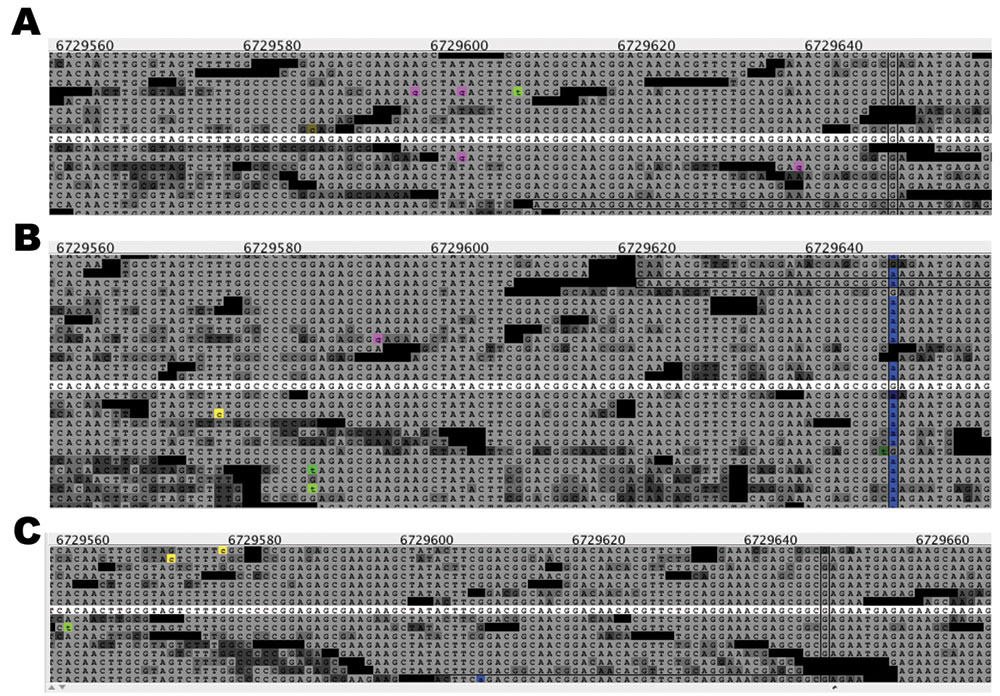Volume 17, Number 2—February 2011
Research
Next-Generation Sequencing of Coccidioides immitis Isolated during Cluster Investigation
Figure 2

Figure 2. Alignment of Coccidioides immitis whole-genome sequence reads flanking a confirmed single-nucleotide polymorphism (RSv3 supercontig 1, position 6729646, highlighted in blue in panel B) among the 3 cluster isolates. Isolates from patients X, Y, and Z, who had coccidioidomycosis, are shown in panels A, B, and C, respectively. The alignment was created by using SolScape, a short-read sequence-alignment viewer developed in house (J. Pearson et al., unpub. data; tool available upon request). Reference sequence position is given at the top of each panel; actual reference sequence is highlighted in white at the center of each panel. Bases differing from the reference sequence are highlighted in pink, green, or yellow.
Page created: July 08, 2011
Page updated: July 08, 2011
Page reviewed: July 08, 2011
The conclusions, findings, and opinions expressed by authors contributing to this journal do not necessarily reflect the official position of the U.S. Department of Health and Human Services, the Public Health Service, the Centers for Disease Control and Prevention, or the authors' affiliated institutions. Use of trade names is for identification only and does not imply endorsement by any of the groups named above.